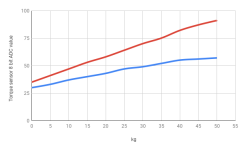casainho
10 GW
- Joined
- Feb 14, 2011
- Messages
- 6,058
It is really nice to disassembly the motor from time to time, clean and grease the gears, etc. I think advanced users should want to do this, specially the ones that use hard his motor!!Kisazul said:After another heavy trip through the mud with water, I decided to disassemble the motor for prevention. There was water behind the gear cover (I am now redoing the protection cover and installing a rubber seal for a tighter connection, later I will show what happened). I took off the torque sensor and was surprised as the surface of the coils became bare. PCB layer disappeared completely. In casainho photo up in some message later does not have this layer either. What could lead to its destruction? Was water mixed with grease? or something different? I will try to restore the sensor, install thin rings from the PCB. And then adjust the sensor with bolts.
My coils are just like that and they work, I think this are a different version of coils, just that.
As we can see by your pictures, the ferrite core on your coils are broken, just like mine although they still work. But the more we touch on them, the more they broke.
Can you please tell me how much springs being the coil are on your torque sensor?? there are 6 holes, 3 of them for 3 round metal parts that are glued on the back of the coil and the other 3 holes should have 3 coils as per TSDZ2 disassembly manual, right?? -- because seems I just have 1 spring or I just loose the other 2 springs...


![ATTACH]](/sphere/proxy.php?image=http%3A%2F%2F%5BATTACH+type%3D%22full%22+alt%3D%22S90709-111505.jpg%22%5D255499._xfImport%5B%2FATTACH%5D&hash=bac030757f0b1e827b5542e5a6e18341)


